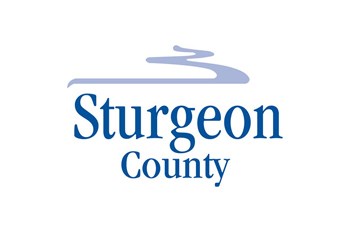UPDATE: This story originally said that Sturgeon County was implementing odd-even lawn watering in the Sturgeon Valley. County officials changed that to a full-on lawn-watering ban Wednesday after this issue went to press. The first half of this story has been rewritten accordingly.
Water ban in Sturgeon Valley
Sturgeon County has banned all non-essential water use in the Sturgeon Valley in an attempt to keep the local reservoir from running dry.County utilities services manager Jeff Yanew told the Gazette late Tuesday that he was implementing an odd-even water restriction in the Sturgeon Valley region.
That changed Wednesday morning when he found out that residents had guzzled down about 10 per cent of the Allin Ridge reservoir's water supply overnight, leaving it just 35 per cent full.
“If we keep going at the rate we’re going, we’ll fully drain the reservoir in three days,” Yanew said.
Yanew said he brought in a total ban on lawn watering and non-essential watering (including firefighter training and recreational use) Wednesday to keep that from happening. The ban would stay in force until the reservoir refilled to its proper level, and would be enforced by bylaw officers. Area water truck fill stations would stay open during the ban, but could be used for drinking water purposes only.
This water shortage is due almost entirely to lawn watering, which accounts for about 75 per cent of the valley’s water use, Yanew said. While the county adds about 13.1 litres of water to the reservoir a second, water demand spikes to 40 L/sec in the valley at 4 a.m. when everyone’s sprinklers turn on, and that’s slowly run down the reserves. Water use is so high in the valley that it’s as if there were 8,100 people living there – the actual population is about 3,400.
Should the reservoir run dry, it would mean Sturgeon Valley residents would be without drinking water until it refilled, Yanew said. The county might have to order an emergency fill of water from Epcor if that happens.
Questions on the restriction should go to the county office at 780-939-4321.
Big stink study
Sturgeon County is putting up $80,000 to find a solution for potentially deadly sewer gas in the Sturgeon Valley, and hopes St. Albert and Morinville will chip in to the cause.County council voted Tuesday to spend up to $80,000 on a study to figure out how to eliminate corrosion and smell problems caused by excess hydrogen sulfide (H2S) gas in the Sturgeon Valley.
H2S is a colourless, poisonous, flammable gas that smells like rotten eggs, corrodes pipes, and can kill in high concentrations.
Administration started getting complaints last September from River’s Gate residents about the smell of the new sewage lift station across the road and next to Riverlot 56, Yanew told council. While it was initially thought the smell was coming from the Sturgeon River, by December it was clear that the station was at fault.
Yanew said tests last February found that the station itself contained “excessively high and dangerous concentrations” of H2S of over 400 parts per million – at least four times higher than the province’s Immediately Dangerous to Life and Health limit for this gas. (The concentration was literally off the scales of the testing equipment.) A later test suggested, but did not confirm, that H2S levels at the entrance to River’s Gate did not violate provincial ambient air quality guidelines.
“It’s more of a nuisance. There’s no health impact for our residents at this point,” Yanew said in an interview, adding that Alberta Environment has asked the county for additional tests.
Yanew told council that county officials test for H2S levels before entering the lift station and ventilate it and/or use breathing equipment if they find dangerous levels.
The current theory is that the excess gas is coming from septic tanks with low-pressure sewer lines, Yanew said. The Alberta Capital Region Wastewater Commission has had smell and corrosion problems elsewhere along the Sturgeon Valley sewage trunk line due to H2S and has asked the county, Morinville, and St. Albert to do a joint plan to address the gas.
Yanew said this study would be a joint initiative with St. Albert and Morinville to determine the cause of and solution to the gas problem in the valley. The study would test air and water at all valley lift stations and see if injecting hydrogen peroxide into sewage lines could reduce gas levels – a tactic successfully used previously by Strathcona County. The county was also working on an education campaign to promote septic tank maintenance.
Yanew said in an interview that the county’s $80,000 commitment to this study assumes the county will do it on its own. He planned to contact his St. Albert and Morinville counterparts to see what cash those communities could chip in.
Yanew said that he hoped to have the study underway this summer.




